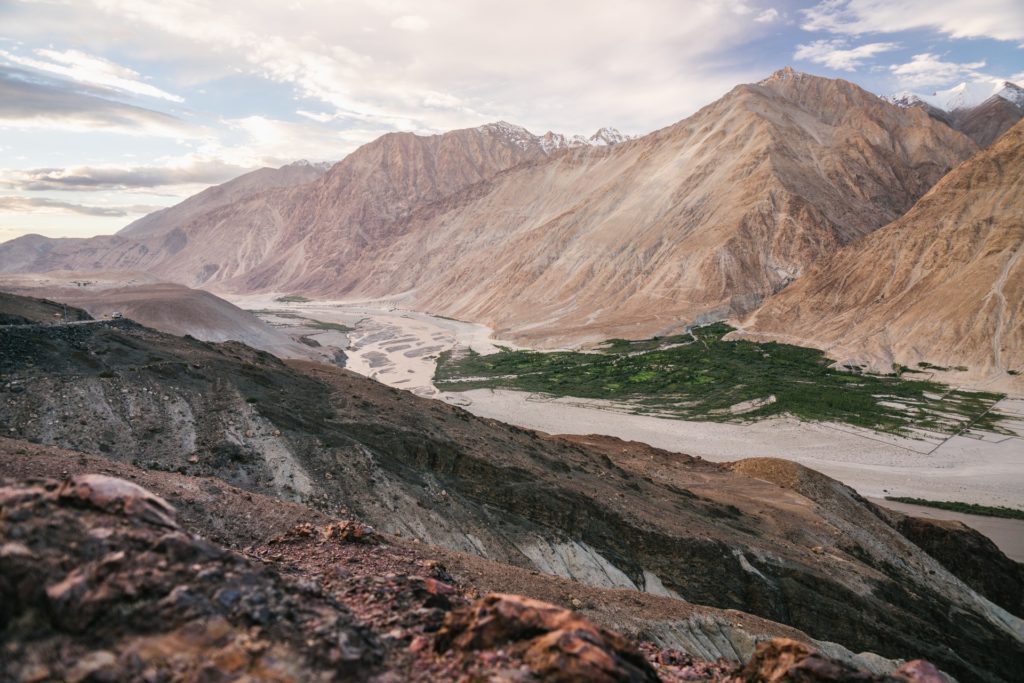One of the most scenic and coveted tourist destinations, Ladakh is open all around the year. It is why people from around the globe come here to witness its wonderful landscape and rugged scenery. This high-altitude Himalayan Mountain Region of India is also called Cold Desert and requires you to exercise precautions for a safe and hassle-free Leh Ladakh trip.
Today, we will provide you with the top tips for a beautiful journey to Ladakh. So, without further ado, let’s dive right in.
—Climate
The picturesque region consists of high-altitude mountains of India and experiences a cold desert-type climate most of the year. This piece of land has altitudes ranging from 9,000 feet to 25,000 feet, so naturally, cold wind blows throughout the day and night.
Summers are comforting, but winters are harsh and brutal, with temperatures dipping to subzero levels. It is not something most Indians are accustomed to, so winter is not the time for the faint-hearted. But if you want to explore Ladakh between November and March, carry woolen sweaters and warm jackets.
To explore glaciers and the Indus River, and do some trekking, visit between April and June. Make sure you take the help of an experienced travel company offering Kashmir tours and excellent Ladakh tour packages.
—Authorization & Passport
International tourists must register beforehand, especially those coming by road. The authorities offer registration at Drass, Rumtse, and Sarchu or the airport for tourists coming by air.
Please note you will need Protect Area Permit for a trip to Tso Moriri, Tso Kar, Pangong Tso Lake, Dhahanu, and Nubra Valley. You can obtain permission through registered Ladakh travel firms. Once you get the permit, please keep at least six copies to show at different investigation points.
—Acute Mountain Sickness (AMS) Medicines
Visiting Ladakh will require you to go through high-altitude Mountains, situated in the range of 9,000 to 25,000 feet above sea level. Before the visit, please buy some medication prescribed by your physician. Conditions like breathlessness, severe headache, and vomiting are common during travel. Some fragile elderlies even experience bubble formation in the lungs, which can be lethal. Therefore, it is wise to keep a thermometer, sphygmomanometer, and a first aid kit.
We recommend inspecting your blood pressure and temperature if you feel dizziness or a fainting condition. No medical treatment is available in Ladakh, so you have to head back to Leh for treatment.
—Hospitals and Clinics
If you feel any discomfort before or after your tour to Ladakh, you should visit the biggest medical center in the town, the SNM hospital. The qualified staff here can deal with any kind of emergency. Besides, you can visit private medical centers in Leh or go to Army General Hospital. Sub-district clinics and dispensaries can help as well in main villages. Chemist shops are aplenty in Leh.
—Mobile Phone Service
You will need a postpaid BSNL mobile sim in Ladakh to get in touch with your family back home. While you will get full signals in Leh and places near it, you will lose connectivity once you start your journey to the farthest places in the north.
You must have the phone numbers of every person in your group to get in touch in case of an emergency. If you are with your family, ensure everyone has the cell number of at least one person in the family.
—ATM and Currency Exchange Facilities
You must have adequate cash before starting your journey to Leh Ladakh. We recommend getting cash from any ATM in Manali because you won’t find any other teller machine on the way to Leh. Credit cards are not acceptable en route, but you can find ATMs in Leh (mostly, they are out of cash). Most food stalls and hotels will only accept cash.
If you are a traveler from abroad, you should exchange your currency for INR from New Delhi. Due to internet restrictions, you will hardly find POS or electronic payment facilities in Ladakh. Leh has some money exchange services, but if you are not coming via Leh, you might not find any currency exchange on the way.
—Clothing to Take Along
Visiting Ladakh in summer may not require warm clothing; jeans and T-shirts would be enough. However, you might feel cold at night when the temperature drops to 5C. A winter trip is impossible without winter clothing such as a jacket, woolen socks, gloves, mufflers, and ankle-size boots. Winter night temperature falls below freezing point, and if your current clothing doesn’t make you warm, buy some protective gear from Leh.
—Extra Gadgets
A trip to Leh Ladakh without a good DSLR will be totally colorless. You definitely want to capture your best moments, so do not forget to carry your camera and other accessories like a mobile charger, power bank, and car charger.
—Local Languages
People in Ladakh speak various languages like Boti (primary), Balti, Brokshat, Changshat, and Shina. However, locals also understand Hindi and English, so you will not have any communication trouble.
—Famous Places to Visit in Ladakh
Make sure you hit Pangong Lake, Tso Moriri Lake, Zanskar Valley, Khardung La Pass, Nubra Valley, Hemis National Park, Pathar Sahib, Nubra Valley, Tso Moriri Lake, Hemis Monastery and Village, and Shanti Stupa.
—Popular Activities
Once you are in this Himalayan desert, you can indulge in various adventurous activities such as mountain biking, peak climbing, trekking, and rafting, along with conventional sports like archery, polo, and camel safari.
There you go, lovelies! Do you have any tips on traveling to Ladakh or similar places? Share them in the comments. Until next time. Ciao!
Photo by ArtHouse Studio



